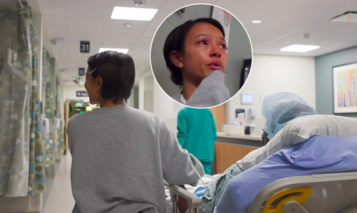
Singer FKA Twigs underwent surgery to remove six fibroid tumors from her uterus in December. The “Video Girl” star, real name Tahliah Barnett, made the revelation on Instagram on Wednesday.
“I have been recovering from laparoscopic (keyhole) surgery to remove six fibroid tumours from my uterus… the tumours were pretty huge, the size of two cooking apples, three kiwis and a couple of (strawberries),” she wrote.
The usually private British singer, who was previously engaged to actor Robert Pattinson, admitted she was very scared before the surgery.
She described her post-op discomfort as “A fruit bowl of pain everyday.”
Uterine Fibroids
Uterine fibroids are a mass of cells that grow inside the muscular walls of the uterus.
Like most women who have fibroids, Barnett’s tumors were benign — meaning non-cancerous.
More than 200,000 women are diagnosed with uterine fibroids every year. Black women are more likely to develop fibroids. Other risks for fibroids include women over 30, menopause, obesity, a family history of fibroids, and pregnancy.
What Causes Uterine Fibroids?
The cause of uterine fibroids is unclear. Some researchers theorize that the female hormone Estrogen may influence the formation of fibroids. Uterine fibroids almost never develop into cancer.
Signs & Symptoms
The symptoms of uterine fibroids depend on their size and location within the uterus.
Some women have no symptoms at all. Other women experience:
How Are Uterine Fibroids Diagnosed?
Uterine fibroids are diagnosed by pelvic exam and ultrasound.
Treatment
Treatment for uterine fibroids include medications (birth control pills, hormone replacement such as Progesterone to oppose Estrogen), anti-hormone (blocks Estrogen or Progestin), ferrous sulfate (iron pills to treat anemia), and pain medicine.
Surgery includes hysterectomy and laparoscopic surgery. Medical procedures include ablation (to destroy the lining of the uterus), and uterine arterial embolization (to block artery feeding the tumors).
Most women opt to forego surgery or procedures if they have no symptoms.
This has been your Medical Minute.
DISCLAIMER
Any medical information published on this blog is for your general information only and is not intended as a substitute for informed medical advice. You should not take any action before consulting with your personal physician or a health care provider. Sandrarose.com and its affiliates cannot be held liable for any damages incurred by following information found on this blog.
Photo by Chris Jackson/Getty Images





